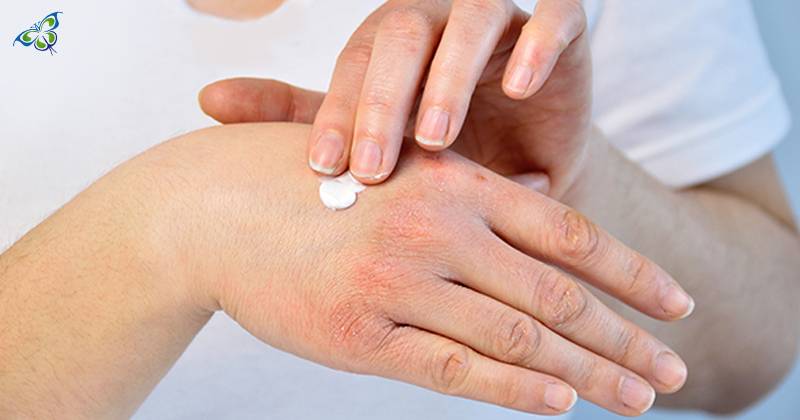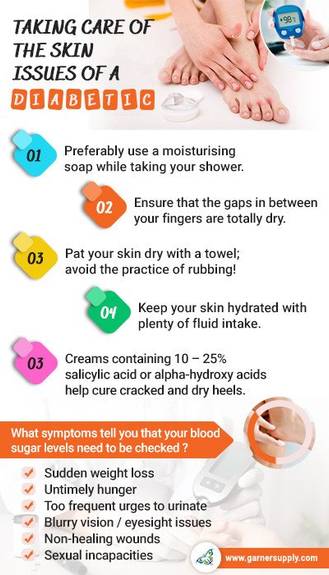
Hello
Select Address

Diabetes is a threat in more forms than one. It can damage many vital organs of the body including the largest one – your skin too! However, affecting the skin implies either of the two things –
Below are enlisted some of the dreadful skin ailments that could emanate from high blood sugar:
BLISTERS
Although rare, yet, blisters might affect the dermis of a diabetic person. You might notice one or several of them, especially in areas like hands feet, legs and forearms. Unlike the blisters that form after a skin burn, these are almost painless. The scientific terminology for this phenomenon is bullosis diabetricorum. It is also referred to as diabetic bullae.
SCLEROSIS
Some diabetics are difficult to treat. With a lot of medications as well as lifestyle changes, the intimidating blood sugar levels tend to come back. Usually, these individuals tend to suffer from a condition called Digital Sclerosis. This condition is marked by the appearance of tight, waxy skin on the toes, palm area, and fingertips. In case of aggravation, it may spread up to forearms and upper arms and even the shoulders, neck, chest and upper back region!
Sclerosis, wherever it might appear, is primarily characterized by hard, thick and swollen-looking skin. If the affected portion is a joint area (such as the knees, ankles, elbow, etc.) there could be difficulty in moving or folding those joints!
DARK VELVETY PATCH
This usually appears on the back of the neck or armpit. It indicates that the individual has too much insulin in the blood and is often considered as a prediabetic symptom. You must have commonly noticed individuals with dark hard skin in the creases of his or her neck. This skin ailment is medically termed as Acanthosis Nigricans! Sometimes, this is one of the first signs of diabetes in most cases.
DIABETIC ULCERS
In simple terms, these are open sores and wounds in patients suffering from high blood glucose levels. This results in nerve damage and poor blood circulation as a result of which wounds do not tend to heal. Nerve damage, on the other hand, does not allow the person to feel the pain too, which in turn allows the soreness to aggravate. Diabetic ulcers, therefore, mostly affect the feet!

A foot care cream mostly tops the list of diabetic creams and lotions. These creams take extra care of the dry and cracked heels and provide relief from itching and burning too. Being a hyperglycemic patient, your feet are the most vulnerable body parts that may succumb to open sores and wounds! You need to be watchful and in case any injury is noticed, keeping the feet heavily moisturized protects you from future diabetic ulcers. The alarming symptoms that call for an immediate appointment with your podiatrist are:
Besides taking care of your feet with the help of products like a foot crème, foot balm or a diabetic foot repair lotion, skincare for diabetics also needs to include the following must-dos:
[Read more: Flu season]
The regular ones only have a normal hydrating impact on the skin. Diabetic creams, on the other hand, are medicated. Since diabetic patients have a very low immunity and their skin is prone to rashes, boils, inflammations, and other infections, they are highly advised with medicated creams. A clinically tested diabetic lotion contain ingredients like vitamin E, aloe vera, and omega 3 fatty acids. Skin irritations, non-healing wounds, ulcers, bacterial infections are all too common for the diabetic skin. A medicated lotion stands essential therefore!